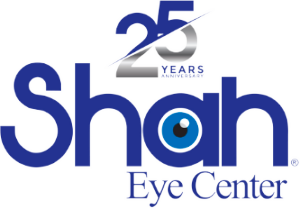LASIK eye surgery stands as a beacon of hope for millions worldwide, offering a potential end to the reliance on glasses or contact lenses. This transformative procedure has evolved significantly since its inception, boasting high success rates and improved vision for countless individuals.
However, the decision to undergo LASIK is significant and requires a thorough understanding of the entire process. This article aims to demystify LASIK, guiding you through the evaluation, the procedure itself, and what you can expect during recovery.
Evaluating Your Candidacy for LASIK
Understanding the Criteria
LASIK isn’t suitable for everyone, and a comprehensive evaluation is the first step in determining if you’re a good candidate. Key factors include age, eye health, corneal thickness, and stability of vision. Typically, candidates must be at least 18 years old, have stable vision for at least a year, and possess corneal thickness that can safely accommodate the procedure.
The Importance of a Thorough Eye Examination
A detailed eye exam is crucial. This examination assesses your eyes’ health, maps the cornea’s surface, and evaluates your vision and prescription needs. The goal is to ensure there are no conditions that could affect the surgery’s outcome or your long-term vision health.
Discussing Expectations and Concerns
An honest discussion with your surgeon about your vision goals and any medical concerns is vital. Understanding the realistic outcomes of LASIK and any potential risks or side effects will help set appropriate expectations for the procedure.
The LASIK Procedure Explained
The Steps of the Surgery
LASIK surgery is known for its efficiency and quickness, often taking less than 30 minutes for both eyes. The procedure involves creating a thin flap in the cornea, reshaping the underlying corneal tissue with a laser, and then repositioning the flap. This process corrects refractive errors by allowing light to focus properly on the retina.
Advanced Technology in LASIK
The use of cutting-edge technology, such as femtosecond lasers for flap creation and excimer lasers for corneal reshaping, enhances precision and outcomes. Wavefront-guided LASIK, which customizes the procedure to the minute details of each patient’s eyes, represents another leap forward in personalized eye care.
During the Surgery: What to Expect
Patients are awake during LASIK, with numbing drops applied to eliminate pain. You may feel pressure or experience mild discomfort, but the procedure is generally not painful. Communication with your surgeon throughout the process can provide reassurance and clarity on what’s happening.
Post-Procedure: The Recovery Process
Immediate Aftercare
Immediately following the surgery, you might experience temporary blurriness, light sensitivity, or discomfort. These symptoms typically subside within a few hours to a few days. Resting your eyes and avoiding strenuous activities are crucial during this initial recovery phase.
The First Few Weeks After LASIK
Most patients notice a significant improvement in vision almost immediately, with further stabilization occurring over the following weeks. Adhering to your doctor’s follow-up appointments and using prescribed medications or eye drops will aid in the healing process and mitigate the risk of complications.
Long-term Care and Vision Changes
While LASIK results are intended to be permanent, vision changes can occur as part of the natural aging process. Regular eye exams are essential to monitor your eye health and address any future needs, whether related to LASIK or general eye care.
Understanding the Risks and Complications
Common Side Effects
Though LASIK is considered safe, understanding potential side effects such as dry eyes, glare, halos, and fluctuating vision is important. These are typically temporary and can be managed with proper care.
Serious Complications Are Rare
Significant complications from LASIK are rare but can include infection or vision loss. Choosing a highly experienced surgeon and following all pre- and post-operative instructions can minimize these risks.
Addressing Concerns with Your Surgeon
Open communication with your surgeon about any concerns or unusual symptoms after LASIK is crucial. Prompt attention to any issues can prevent complications and ensure the best possible outcome.
Making the Decision: Is LASIK Right for You?
Weighing the Benefits Against the Risks
Considering LASIK involves weighing the potential for life-changing improvement in vision against the small risk of complications. For many, the chance to reduce or eliminate dependence on glasses or contacts is worth it.
Financial Considerations
LASIK is an investment in your vision. While not typically covered by insurance, financing options can make the procedure accessible. Consider the long-term savings on eyewear when evaluating the cost.
Consultation Is Key
A consultation with a qualified LASIK surgeon is the best way to determine if you’re a good candidate for the procedure. This meeting provides an opportunity to ask questions, express concerns, and gain a comprehensive understanding of what LASIK can offer you, and it’s free of charge.

